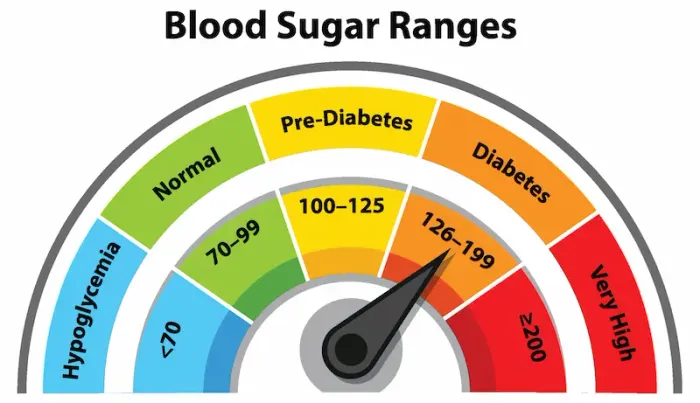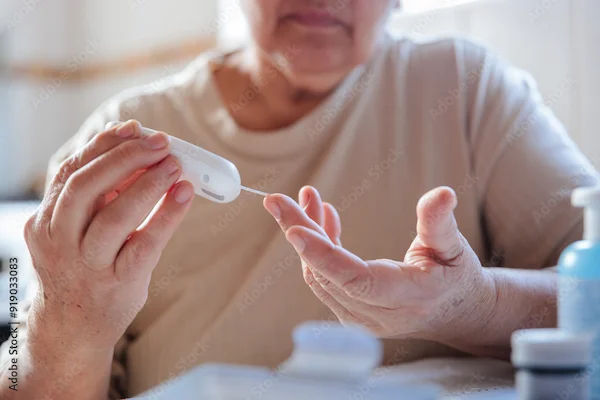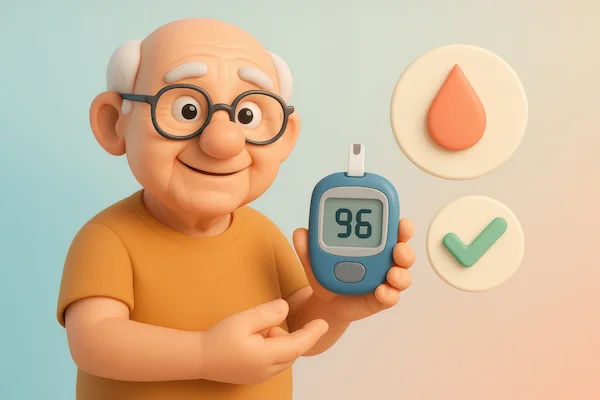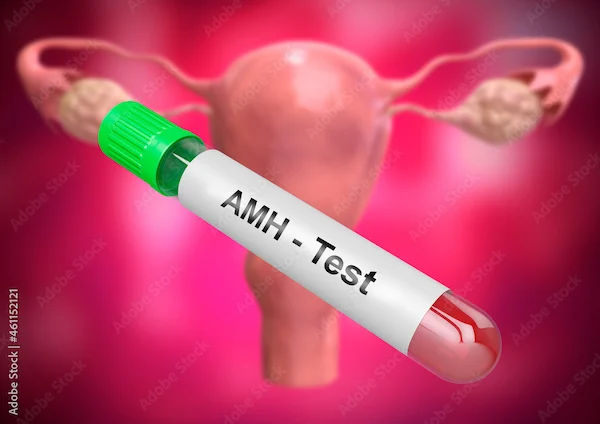Guide to Blood Sugar Normal Range
Manage your health with our concise guide to normal blood sugar levels. Learn the target ranges for fasting, pre-meal, and post-meal glucose tests and understand what the numbers mean for your well-being. Know your numbers today!

Written by Dr. Mohammed Kamran
Reviewed by Dr. Shaik Abdul Kalam MD (Physician)
Last updated on 27th Oct, 2025

Introduction
If you’ve ever wondered whether your blood sugar is “in the normal range,” you’re not alone. Between fasting tests, after-meal checks, and the A1C lab test, it can feel confusing to know what’s normal, what deserves a closer look, and what to do if your numbers aren’t where you want them. This clear, practical guide breaks it all down. You’ll learn the normal blood sugar range for fasting, after meals, random checks, and A1C—plus how those numbers change in special situations like pregnancy. We’ll explain how to test correctly, what can skew results (think stress, sleep, or certain medications), and how to keep your blood sugar in a healthy range with food, movement, sleep, and other simple habits. You’ll also see when to seek medical advice and which tests to ask for, including convenient home collection options. Whether you’re tracking to prevent diabetes, recently diagnosed with prediabetes, or managing diabetes and aiming for more “time in range,” this guide will help you understand your numbers and take the next best step with confidence.
What “Normal” Means for Blood Sugar—and Why It Matters
Your body tightly regulates blood sugar (glucose) to fuel your brain, muscles, and organs. After you eat, glucose rises as food digests; insulin helps move glucose into cells; and your liver stores or releases glucose as needed. These checks and balances keep levels within a normal range most of the time.
A quick physiology refresher:
Insulin lowers glucose by helping cells absorb it, while hormones like glucagon and epinephrine raise glucose when you’re fasting or under stress. In insulin resistance or diabetes, glucose can stay elevated longer or go higher than normal.
Units explained:
In many countries, glucose is measured in mg/dL; in others, mmol/L. Conversion is simple: mg/dL ÷ 18 = mmol/L; mmol/L × 18 = mg/dL. For example, 90 mg/dL ≈ 5.0 mmol/L.
Timing matters:
Fasting blood sugar is measured after at least 8 hours without calories—often first thing in the morning—and reflects overnight liver output and baseline insulin sensitivity.
Post-meal (postprandial) blood sugar peaks about 1–2 hours after eating and reflects how your body handles glucose load from a meal.
Random blood sugar is a spot check at any time; it’s helpful when symptoms are present.
Why it matters:
Keeping blood sugar in the normal range reduces the risk of developing type 2 diabetes for those with prediabetes and lowers the risk of complications for those with diabetes. Even day-to-day, staying in range can improve how you feel—more energy, fewer headaches, better concentration. For people using continuous glucose monitors (CGMs), time spent in a target range (often 70–180 mg/dL) is linked with better outcomes over time.Consult a Top General Physician
Standard Blood Sugar Normal Ranges for Adults (Not Pregnant)
Authoritative organizations define “normal” ranges based on large studies. For most nonpregnant adults without diabetes:
Fasting plasma glucose (FPG), normal:
• 70–99 mg/dL (3.9–5.5 mmol/L) is generally considered normal.
• 100–125 mg/dL (5.6–6.9 mmol/L) suggests prediabetes.
• ≥126 mg/dL (≥7.0 mmol/L) on two separate days suggests diabetes.
Post-meal (postprandial) glucose, normal:
• At 1–2 hours after the start of a meal, <140 mg/dL (<7.8 mmol/L) is often cited as normal for people without diabetes.
• For people with diabetes, many guidelines recommend <180 mg/dL (<10.0 mmol/L) at 1–2 hours after meals as a target, individualized to the person.
Random blood sugar:
• In people with classic symptoms of high blood sugar (excess thirst, frequent urination, unexplained weight loss), a random glucose ≥200 mg/dL (≥11.1 mmol/L) may indicate diabetes and should prompt confirmatory testing.
A1C (glycated hemoglobin), normal:
• Reflects your average blood sugar over ~3 months.
• Below 5.7% is considered normal; 5.7–6.4% indicates prediabetes; ≥6.5% suggests diabetes (confirmed on a second test).
• A1C can be translated to estimated average glucose (eAG):
for example, A1C 5.6% ≈ eAG 114 mg/dL (6.3 mmol/L), A1C 6.5% ≈ eAG 140 mg/dL (7.8 mmol/L).
Why two numbers may differ:
Lab plasma glucose vs capillary fingerstick readings can vary slightly, and A1C is an average that can “hide” spikes. If you’re on the borderline, using both A1C and targeted fingerstick or CGM checks gives a fuller picture. If your fasting is “normal” but after-meal checks are high, postprandial glucose may be where to focus. For those curious about tech, CGM informs “time in range” (typically 70–180 mg/dL), variability, and overnight patterns not visible with A1C alone.
Prediabetes and Diabetes: Diagnostic Numbers You Should Know
Prediabetes means your blood sugar is higher than normal, but not high enough for a diabetes diagnosis. It’s a critical window to act—lifestyle changes can delay or prevent type 2 diabetes. In the U.S., about 96 million adults have prediabetes, and most don’t know it.
ADA diagnostic thresholds:
• A1C:
• Normal: <5.7%
• Prediabetes: 5.7–6.4%
• Diabetes: ≥6.5% (confirm on a different day)
• Fasting Plasma Glucose (FPG):
• Normal: 70–99 mg/dL (3.9–5.5 mmol/L)
• Prediabetes: 100–125 mg/dL (5.6–6.9 mmol/L)
• Diabetes: ≥126 mg/dL (≥7.0 mmol/L)
• 2-hour Oral Glucose Tolerance Test (OGTT, 75 g glucose):
• Normal: <140 mg/dL (<7.8 mmol/L)
• Prediabetes (impaired glucose tolerance): 140–199 mg/dL (7.8–11.0 mmol/L)
• Diabetes: ≥200 mg/dL (≥11.1 mmol/L)
Confirming diagnosis:
Unless you have clear symptoms and a random glucose ≥200 mg/dL, diagnosis should be confirmed by repeating the same test (or a different test) on another day . Why repeat? Hydration, acute illness, stress, or lab variability can temporarily distort results.
Why earlier is better:
Intensive lifestyle change (healthy eating pattern, ≥150 minutes/week of moderate activity, and 5–7% weight loss if overweight) can reduce progression from prediabetes to diabetes by up to 58% in clinical trials, with even larger benefits in older adults. If you have prediabetes numbers, a short, focused 3–6 month plan can make a measurable difference in fasting and post-meal readings—often before medication is considered.
Reading and Tracking Your Numbers: From Meters to CGM
Getting accurate, consistent readings helps you see patterns and make better choices.
Fingerstick meters (glucometers):
• Technique matters: Wash and dry hands (no residues), use a fresh lancet, test from the side of the fingertip, and ensure enough blood fills the strip. Compare your meter with a lab value at a clinic visit now and then to check accuracy.
• When to check:
For pattern-finding, try fasting, then occasionally 1–2 hours after different meals. If you see fasting within normal range but after-meal spikes above 140–160 mg/dL (7.8–8.9 mmol/L), focus on meal composition and post-meal movement.
Unique insight:
“Paired testing” (pre-meal and 1–2 hours after) 2–3 times per week quickly reveals which meals push you out of the normal postprandial range and which keep you in range.
Continuous glucose monitoring (CGM):
• Time-in-Range (TIR): For many nonpregnant adults with diabetes, 70–180 mg/dL (3.9–10.0 mmol/L) with ≥70% time in range is a common target; <4% time below 70 mg/dL is advised. TIR often correlates with A1C, but it also highlights day-to-day variability.
• TIR makes it easier to see nocturnal lows, early-morning rises, and the effect of specific foods or workouts. Even if you don’t use CGM long-term, a short “trial” can be educational.
Morning highs: Dawn phenomenon vs. Somogyi effect
• - Dawn phenomenon: A pre-waking hormone surge raises glucose, creating higher fasting readings despite normal nighttime levels.
• - Somogyi effect:
A nighttime low triggers a rebound high. How to tell? A 3 a.m. check or CGM trace. If 3 a.m. is normal/high, think dawn phenomenon; if low, think Somogyi. The fix differs (bedtime snack/protein vs. adjusting evening meds or activity).
Unique insight:
Late-night heavy meals or alcohol can blur this picture; track evening patterns for a few days to see the true driver.
What Affects Blood Sugar and A1C—Beyond Food?
Your numbers aren’t only about carbs. Several non-food factors can shift glucose and even skew A1C results.
Life factors:
• Illness and infection: Raise stress hormones, increasing glucose even if you eat less.
• Stress and sleep: Short sleep and high stress elevate cortisol and adrenaline, raising fasting and post-meal glucose. Aim for 7–9 hours of sleep and stress practices you’ll actually do (walk breaks, breathing, short meditations).
• Menstrual cycle: Many people notice higher readings in the luteal phase (post-ovulation to menses) due to hormonal changes affecting insulin sensitivity.
Medications, dehydration, and pain:
• Steroids (e.g., prednisone) commonly elevate blood sugar; some decongestants and certain antipsychotics can too. Discuss temporary adjustments with your clinician if applicable.
• Dehydration concentrates glucose and can transiently raise readings.
• Acute pain elevates stress hormones; readings often normalize as the pain resolves.
When A1C is unreliable:
• Anemia, hemoglobin variants (e.g., sickle trait), recent blood loss/transfusion, chronic kidney disease, or conditions that alter red blood cell lifespan can make A1C misleading—either falsely low or high . In these cases, alternatives like fructosamine or using CGM/structured meter testing may be better to assess average control. This is particularly important if your A1C and meter/CGM don’t match.
Unique insight:
Seasonality matters. People often see higher A1C in winter (less activity, different eating patterns) and lower in summer. If you notice a seasonal swing, plan ahead—build in indoor movement and high-fiber comfort meals in cooler months.
Keeping Blood Sugar in the Normal Range: Practical Strategies
Diet
• Plate method: Fill half your plate with non-starchy vegetables, one-quarter with lean protein, and one-quarter with high-fiber carbs. This naturally moderates glucose rise without counting every gram.
• Fiber and protein timing: Start meals with veggies and protein, then eat starches. Studies show this “food order” can blunt post-meal spikes. Aim for 25–38 g fiber/day, emphasizing legumes, whole grains, nuts, seeds, and vegetables.
• Smart swaps: Choose steel-cut oats over instant oats; whole fruit over juice; sourdough or wholegrain bread over white bread; add vinegar or lemon to meals to modestly reduce glucose rise.
• Hydration: Water before meals may reduce portion size and improve readings.
Movement
• Post-meal activity: A 10–15 minute walk after eating can lower post-meal glucose by improving muscle uptake—an easy win if your 1–2 hour readings run high.
• Strength matters: Building muscle improves insulin sensitivity. Two short resistance sessions weekly (even bodyweight) can make fasting and A1C budge.
• Daily consistency: Aim for at least 150 minutes/week of moderate activity. For desk jobs, brief movement “snacks” (2–3 minutes every 30–60 minutes) help flatten glucose excursions.
Weight, sleep, and stress
• Modest weight loss (5–7% if you carry extra weight) significantly improves fasting and post-meal numbers in prediabetes.
• Sleep 7–9 hours; even one bad night can nudge fasting up. Keep a consistent schedule and wind-down routine.
• Stress tools that fit your life: brief breathwork, walk-and-talk calls, or a 5-minute stretch. The “best” stress reduction is the one you’ll do daily.
When lifestyle isn’t enough
If your fasting remains above normal range or A1C stays in the prediabetes or diabetes range despite consistent changes, talk to your clinician about medication. Metformin is often used in prediabetes and early type 2, especially if you have additional risk factors. GLP-1 receptor agonists and SGLT2 inhibitors may be considered based on individual needs and comorbidities.
Unique insight:
Choose one lever at a time. For example, do paired checks after your usual breakfast for one week, test a new breakfast for the next week, and compare. Iteration beats overwhelm.
When to Seek Care, What to Ask, and How Apollo 24|7 Can Help?
Red flags
• High blood sugar symptoms: excessive thirst, frequent urination (especially at night), blurry vision, fatigue, slow-healing cuts, recurrent infections, or unintended weight loss.
• Low blood sugar (more common if you use certain diabetes medications or insulin): shakiness, sweating, confusion, irritability; severe lows can cause fainting or seizures. If these symptoms persist beyond two weeks, consult a doctor online with Apollo 24|7 for further evaluation.
Tests to consider
• A1C: Reflects 3-month average; consider checking every 3–6 months based on risk and goals. Apollo 24|7 offers convenient home collection for tests like HbA1c, fasting glucose, and lipid profiles.
• Fasting plasma glucose (FPG): After an 8-hour fast; usually in the morning.
• OGTT: Especially helpful if fasting is borderline but after-meal spikes are suspected.
• Lipids, blood pressure, and kidney function: Important cardiometabolic risk markers.
Care plan
• If your fasting is consistently >99 mg/dL (5.5 mmol/L) or your A1C is ≥5.7%, discuss a plan focused on diet, activity, sleep, and weight management, with or without medication depending on your numbers and risk factors. If your condition does not improve after trying these methods, book a physical visit to a doctor with Apollo 24|7.
• If you experience persistent morning highs, bring a 3–7 day log (fasting and 1–2 hour post-meal readings) or CGM reports to your appointment. This speeds up targeted changes.
Consult a Top General Physician
Conclusion
Understanding what “normal” means for blood sugar—and how fasting, after-meal, random checks, and A1C fit together—turns a confusing topic into a manageable plan. For most nonpregnant adults, a normal fasting range is 70–99 mg/dL, and a normal post-meal value at 1–2 hours is under 140 mg/dL. An A1C below 5.7% aligns with a healthy average, while prediabetes and diabetes have well-defined thresholds. But numbers live in context: stress, sleep, illness, and medications can nudge readings, and A1C can be misleading in certain conditions. That’s why smart self-tracking—good technique with a meter, occasional post-meal checks, or short-term CGM—and simple, consistent habits (more fiber and protein, short walks after meals, adequate sleep, and stress management) are powerful tools to keep you in range. If your readings trend upward or you notice symptoms, seek timely help. Apollo 24|7 can connect you with a clinician online and arrange home collections for key labs like HbA1c, fasting glucose, and lipid profiles so you can act sooner and with confidence. Whether your goal is to prevent diabetes, reverse prediabetes, or fine-tune control if you have diabetes, small changes guided by your data can deliver big benefits. Start with one change this week, track how it affects your numbers, and build from there.
Consult a Top General Physician

Dr. Syed Ismail Ali
General Practitioner
7 Years • MBBS
Hyderabad
Apollo 24|7 Clinic, Hyderabad

Dr. Anand Ravi
General Physician
2 Years • MBBS
Bengaluru
PRESTIGE SHANTHINIKETAN - SOCIETY CLINIC, Bengaluru

Dr Syed Mateen Pasha
General Physician
2 Years • MBBS
Bengaluru
PRESTIGE SHANTHINIKETAN - SOCIETY CLINIC, Bengaluru

Dr. Sandhya Chandel
General Physician/ Internal Medicine Specialist
16 Years • MBBS, MD (Int. Med.), IDCCM
Bilaspur
Apollo Hospitals Seepat Road, Bilaspur
(125+ Patients)

Dr. Harshendra Jaiswal
General Physician/ Internal Medicine Specialist
12 Years • MBBS , MD (General medicine)
Kolkata
108 DHANA DHANVANTARI Clinic, Kolkata
(25+ Patients)
Consult a Top General Physician

Dr. Syed Ismail Ali
General Practitioner
7 Years • MBBS
Hyderabad
Apollo 24|7 Clinic, Hyderabad

Dr. Anand Ravi
General Physician
2 Years • MBBS
Bengaluru
PRESTIGE SHANTHINIKETAN - SOCIETY CLINIC, Bengaluru

Dr Syed Mateen Pasha
General Physician
2 Years • MBBS
Bengaluru
PRESTIGE SHANTHINIKETAN - SOCIETY CLINIC, Bengaluru

Dr. Sandhya Chandel
General Physician/ Internal Medicine Specialist
16 Years • MBBS, MD (Int. Med.), IDCCM
Bilaspur
Apollo Hospitals Seepat Road, Bilaspur
(125+ Patients)

Dr. Harshendra Jaiswal
General Physician/ Internal Medicine Specialist
12 Years • MBBS , MD (General medicine)
Kolkata
108 DHANA DHANVANTARI Clinic, Kolkata
(25+ Patients)
More articles from Sugar Level
Frequently Asked Questions
1) What is a normal fasting blood sugar level?
For most nonpregnant adults, 70–99 mg/dL (3.9–5.5 mmol/L) is normal. 100–125 mg/dL suggests prediabetes, and ≥126 mg/dL suggests diabetes, confirmed on a separate day .
2) What is normal blood sugar after eating?
At 1–2 hours after the start of a meal, <140 mg/dL (<7.8 mmol/L) is normal for people without diabetes. Many with diabetes aim for <180 mg/dL (<10.0 mmol/L), individualized to the person [3,4].
3) What is a normal random blood sugar?
Random readings vary with timing and meals. With classic symptoms, a random ≥200 mg/dL (≥11.1 mmol/L) suggests diabetes and should be confirmed with a second test
4) What is a normal A1C?
A1C <5.7% is normal; 5.7 -- 6.4% indicates prediabetes; ≥6.5% suggests diabetes (confirmed on a different day). If you have anemia or kidney disease, A1C may be unreliable—consider CGM or paired testing [1,4].
5) How can I quickly lower a high post-meal blood sugar?
Walk for 10–15 minutes, drink water, and prioritize fiber and protein at your next meal. Over time, adjusting meal composition and adding strength training improve the postprandial blood sugar range. If high numbers persist, consult a doctor online with Apollo 24|7.



